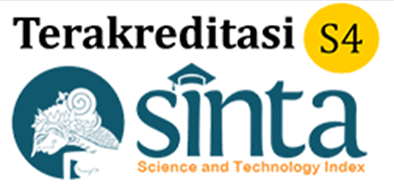Analisi Strategic Location dan Marketing Communication Terhadap Minat Beli di Perumahan Azalea Garden Tanggerang
Abstract
This study aims to determine the effect of strategic location and marketing communication on the purchasing decisions of respondents who are housing owners in Azalea Garden. This research is descriptive. Primary data and secondary data were obtained. Secondary data was obtained from various sources such as journals, books and other related primary publication data obtained by distributing questionnaires to target respondents. By using convenience sampling technique, the target sample is at least 100 respondents. The analytical method used in this research is Variance Based Structural Equation Modeling - Partial Least Square and data processing using SmartPLS version 3.0 program. This study shows the results that strategic location and marketing communication have a positive relationship and have a significant effect on purchase intention. The variability of strategic location and marketing communication constructs is 70.1% on purchase intention.
References
Christian, M.S., Garza, A.S., and Slaughter, J.E. (2011). Work engagement: A quantitative review and test of its relations with task and contextual performance. Personnel Psychology, 64(1), 89-136.
Hu, T., Zhang, D., and Wang, J. (2015). A meta-analysis of the trait resilience and mental health. Personality and individual differences, 76, 18-27.
Hyo S.J., and Hye H.Y. (2018). Improving frontline service employees’ innovative behavior using conflict management in the hospitality industry: The mediating role of engagement. Tourism Management, vol.69, 504-505.
Karatepe, O.M., and Shahriari, S. (2014). Job embeddedness as a moderator of the impact of organizational justice on turnover intentions: A study in Iran. International Journal of Tourism Research, 16(1), 22-32.
Karatepe, O.M., Beirami,E., Bouzari,M., and Safavi, H.P. (2014). Does work engagement mediate the effects of challenge stressors on job outcomes? Evidence from the hotel industry. International Journal of Hospitality Management, 36, 14-22.
Li, X., Sanders, K., and Frenkel, S. (2012). How leader-member exchange, work engagement and HRM consistency explain Chinese luxury hotel employees’ job performance. International Journal of Hospitality Management, 31(4), 1059-1066.
P.D.Pramanik, Robiatul A., and Filma festivalia.(2016). Organizational Commitment to Turnnover Intention of Melawai Hotel Employees in Jakarta. Asia Tourism Forum-2016, Proceeding, ISBN (on-line): 978-94-6252-201-5.
Rian, P., and Zamralita. (2017). Gambaran work engagement pada karyawan di PT, EG (manufacturing industry). Jurnal Muara Ilmu Sosial, Humaniora, dan Seni, 1(2), 295-303.
Santoso, Singgih, 2014. Panduan Lengkap SPSS Versi 20, edisi Revisi. Kompas Gramedia, 315.
Schaufeli, W.B., and Bakker, A.B. (2014). Defining and measuring work engagement: Bringing clarity to the concept.Retrieved from: https://www.researchgate.net/
Tepper,B.J.(2000). Consequences of abuse supervision. Academy of Management Journal, 43(2), 178-190.
Tepper, B.J., Duffy, M.K., and Shaw, J.D. (2001). Personality moderators of the relationship between abusive supervision and subordinates’ resistance. Journal of Applied Psychology, 86(5), 974-983.
You-De D., Wen-Long Z., and Tzung-Cheng H. (2019) Engage or quit? The moderating role of abusive supervision between resilience, intention, and work engagement. Tourism Management, vol.70, 73.
Yucheng Z., Yongxing G., and Alexander N. (2017). Identity judgements, work engagement and organizational citizenship behavior: The meadiating effects based on group engagement model. Tourism Management, vol.61, 190-197.
Xu,A.J., Loi, R., and Lam, L.W. (2015). The bad boss takes it all: How abusive supervision and leader-member exchange interact to influence employee silence. The Leadership Quarterly, 26(5), 763-774.
Copyright (c) 2021 Muhamad Al Faruq Abdullah, Fathihani Fathihani

This work is licensed under a Creative Commons Attribution 4.0 International License.













